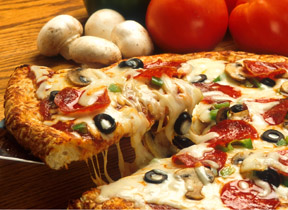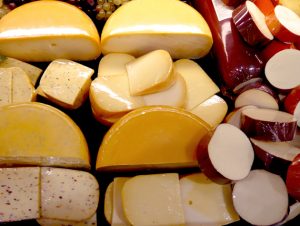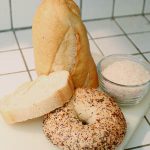Cheese Addiction: Sounds Funny. But I’m Serious. It’s Real.
When talking to people about cleaning up their diet, the number one food that is brought up is cheese. “I can’t live without my cheese.” Or, “Cheese is my main downfall.”
Or simply the statement of surrender, “I can’t give up cheese.” It is never surprising to me, yet it seems surprising to them. There is a very good reason they love and “can’t” give up cheese and it is not in their “head.” Cheese addiction is scientific. It’s real—just like drug and alcohol addiction. Of course, you don’t find people losing their jobs, family, or homes over it (thankfully)! Could you imagine homeless people begging for cheese (“hey, man, got any cheddar? I really need it.”)?
What Makes Cheese Addicting?
Opiates are found in the casein, a protein present all dairy, but concentrated in cheese. It’s the same opiate found in morphine. When I found this out in my studies, it made sense to me on a personal level. I’m very sensitive to opiates and usually choose not to take them if they are prescribed to me for post-op or injury, simply because they knock me out. Cheese does the same thing to me on a smaller scale, of course. I usually avoid consuming cheese on a regular basis. But if I do, it is in small amounts. Otherwise, I find myself napping soon after I eat it and sometimes feeling headachy… not very productive. I also suffered from serious bouts of constipation as a child as I used to eat a lot of dairy. Although dairy is very binding and mucus-forming on its own, opiates also cause constipation since they slow peristalsis in the colon.
How Does the U.S. Government Fuel Cheese Addiction?
The United States Department of Agriculture (USDA) gives money to the dairy industry in the form of its Checkoff program. (I wish they would do that with the organic fruit and vegetable industry!). Have you noticed how restaurants, especially fast food establishments, showcase cheese or extra cheese? More cheese slices on sandwiches. More cheese sauces. More cheese crammed onto a pizza or stuffed into it’s crust. More cheese melted over any type of food. It’s on EVERYTHING and there is a lot of it (Pizza Hut’s “Ultimate Cheese Pizza” has a pound of cheese on it and the USDA helped promote it!) As stated by the Physician Committee for Responsible Medicine,

The dairy checkoff is a marketing program in effect since 1984 to increase the consumption of dairy products and reduce surpluses by, inter alia, touting the purported benefits of dairy products. It is funded by a mandatory assessment (i.e., tax) on dairy producers. It is administered by USDA and managed by the National Dairy Promotion and Research Board (“Dairy Board”), which is comprised of dairy farmers who are appointed by the Secretary of Agriculture. The government has even acknowledged that cheese has addictive qualities. Rather than educate consumers to reduce or eliminate this unhealthy item from their diets, USDA instead embarked on efforts “aimed at triggering cheese lovers’ craving for cheese.” So in short, the USDA gives money to promote the sale and consumption of cheese — knowingly feeding cheese addiction.
Breaking the Addiction
It’s quite easy. Don’t eat it. No profound advice here. You won’t have withdrawals (maybe some cravings, but no real withdrawal symptoms). Don’t buy it. Start making or ordering foods without it. With the addition of sauces and condiments, you may not even miss it. For example: Use extra salsa in Mexican dishes or extra marinara sauce in Italian dishes. Eliminate cheese from sandwiches. You’ll be surprised how good food will still taste. After about two weeks, you won’t miss it at all.
My Take On Cheese Consumption
In general, I recommend minimizing all dairy intake. But cheese in particular is very calorie-dense, very high in saturated fat and a common culprit for causing constipation. Pasteurization makes it difficult to absorb the calcium contained in dairy (plant sources are much better). If consumed, it should be free of artificial hormones (rbgh) and antibiotics. Melted or cooked cheese is much harder to digest than uncooked cheese (think about it, it’s the consistency of tar!). Furthermore, cheese made with raw milk is easier to digest and more nutritious, but it should be avoided by pregnant women or those with compromised immunity. Eating it with vegetables or beans helps digest it as well (high fiber). I strongly suggest eliminating it completely from your diet if you suffer from allergies or something serious such as cancer (there is a hormone in dairy that fuels the growth of cancer cells. I’ll do a post on that later.). As with any food recommendation, you should pay attention to how you feel after you eat it and make your own decision and personal modifications based on your physical responses and condition. For instance, if you get headaches, fatigue, or digestion problems after eating it, you should probably eliminate from your diet.
Personally – Do I Eat Cheese?
Sparingly. I really enjoy artisan cheeses once in awhile (the high price helps me avoid it too). I don’t eat cheese when I know I have to be productive since it makes me tired. Some cheese affects me more adversely than others. I’m usually OK after some mozzarella, still a bit sleepy, but no sinus headaches (maybe because of my Italian genes?) but cheddar ruins me. I love a good quesadilla, but I rarely partake since I’m on the couch napping soon after… feeling grouchy and headachy. Most of the time, it’s not worth the consequences.







Leave a Reply